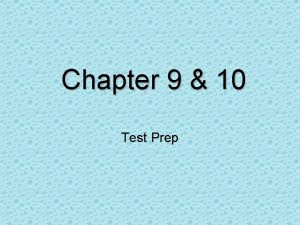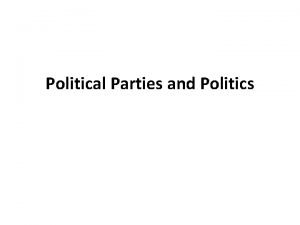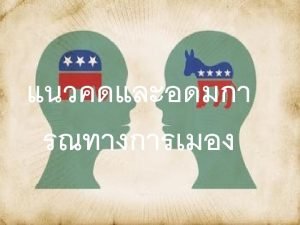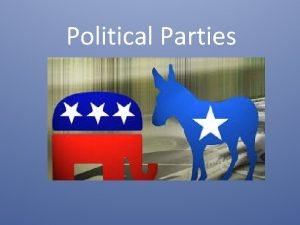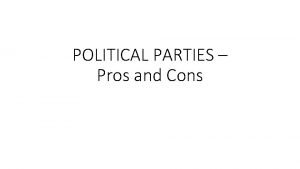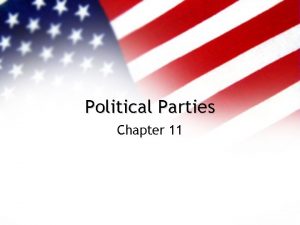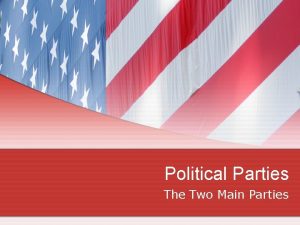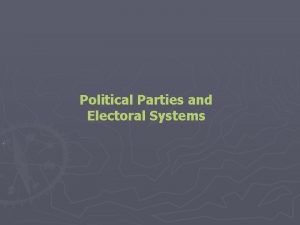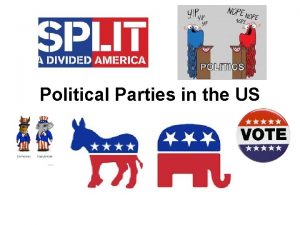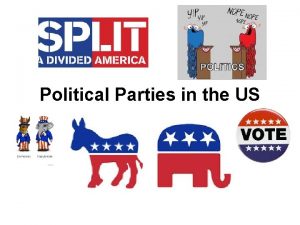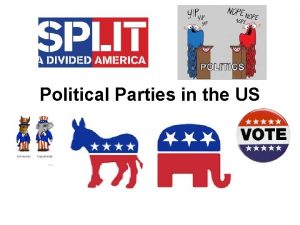Canadas Electoral System Canadas Electoral System Political Parties









- Slides: 9

Canada’s Electoral System

Canada’s Electoral System • Political Parties – Offer choice – Give stability to the political process – Legitimize “Good” Candidates – Membership in Political Party – Official Party Status

Political Spectrum • Left Wing – Support Change – Government should provide more social services – Support higher taxes – Involved in managing the economy – Criminal should be rehabilitated – Support new solutions to old problems • Centrist Moderate – Both tradition and change – Government plays role only when it improves the lives of citizens – Rights of individuals should be protected – Some new and some old solutions

Political Spectrums • Right Wing – Support tradition and the status quo – Limited role in the economy – Support business and free enterprise – Budget should be balanced – Law and order a high priority – Old solutions

Historic Political Parties • Progressive Conservatives (PC) – More control on government spending and tax cuts – Privatization • The Reform Party – – – Manitoba in 1987 Western provinces Reduce national debt Change the constitution Opposed Quebec’s demands Very Right wing • The Canadian Reform Conservative Alliance Party – – – – – Spring of 2000 Joining of 2 parties Reach more voters Flat tax rate Balanced budget Free enterprise Strong families Safer streets Secure borders

The Election Process • Who can vote? – Universal franchise • Every Canadian adult (18 years) – Voter apathy • Prominent amongst younger citizens, a reluctance to vote – Caused by: lack of awareness of process and candidates • The Process 1. The Call 1. Prime Minister asks Gov Gen to dissolve parliament Done every five years, or sometimes early (test of support) 2. 3. 4. 5. 1. 1. 1. 2. 1. The Nominations Candidates submit nominations to go on ballot The Voters’ List Chief Electoral Officer prepares voter list per province The Election Campaign • Candidates sell themselves to the public Campaign Controversy Over spending and mud slinging Election Day Go and vote!

Canada’s Electoral System • Types of Government – Majority Government • Hold more than 50% of HOC – With 167 seats, Conservatives hold a majority Government – Minority Government • Hold less than 50% HOC • Must rely on vote from other parties to get legislation (bills) to pass – A lost vote can result in end of political reign – Coalition Government • Joining of two or more parties who to form a government (done when no clear majority leader in HOC)

First Past the Post System • First past the post (FPTP) – Following election closing ballots are counted – Winning candidate in particular riding does not have to win the majority of the votes to win the riding, just receive more votes than the rest running against them – Some degree of controversy with this system due to seats won versus votes received (see page 26) • 1996 BC Election NDP won with 39% of the vote while Liberals lost with 42% (Liberal riding wins were by wider margin than NDP)

Alternatives to FPTP System • Proportional Representation – European – Voters elect a candidate on the basis of the party they represent – seats won/filled based on votes received • Problem: not every riding is represented by a party member (BQ) • Preferential Ballot – Found in Australia – Voters “rank” candidates in order of preference • Problem: Winner may actually only have a small portion of the populations vote, may only represent one are of a country
